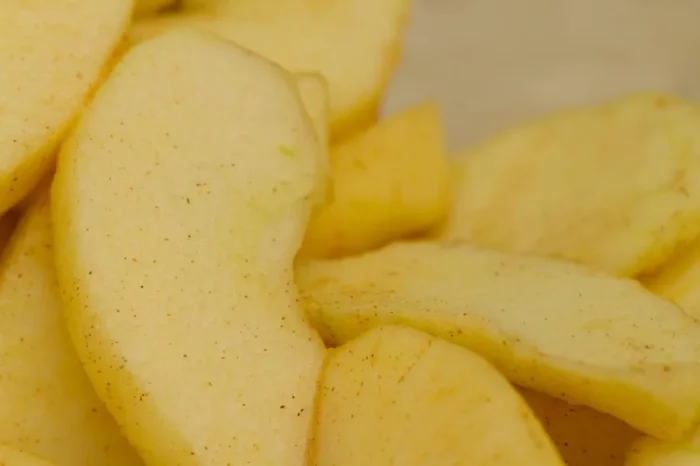Rabdi is a popular North Indian dessert made from milk, sugar, and various flavorings. It is a rich, creamy dish with a delightful sweetness that is often enjoyed during festivals, special occasions, and as a comforting treat after meals. In this article, we will go through the step-by-step process of preparing rabdi at home.
Ingredients Required
To prepare rabdi, you will need the following ingredients:
For the Rabdi
Full-fat milk: 1 liter
Sugar: 150 grams (adjust to taste)
Cardamom powder: 1 teaspoon
Saffron strands: A pinch (optional, for color and flavor)
Almonds: 10-12, sliced
Pistachios: 10-12, sliced
Rose water: 1 tablespoon (optional, for fragrance)
For Garnishing
Chopped nuts: Almonds and pistachios (as required)
Saffron strands: A few strands (for garnish, optional)
SEE ALSO: 5 Substitute for Eggs in a Cake
Preparation Steps
Step 1: Boil the Milk
Choose a Heavy-bottomed Pan: Select a thick, heavy-bottomed pan to prevent the milk from burning. A non-stick pan is a good option as it ensures even heating.
Pour in the Milk: Pour 1 liter of full-fat milk into the pan.
Heat the Milk: Place the pan on medium heat and bring the milk to a boil. Stir the milk occasionally to prevent it from sticking to the bottom of the pan.
Skim the Cream: As the milk comes to a boil, you will notice cream forming on the surface. Gently skim this cream off with a ladle and set it aside. This will enhance the richness of the rabdi.
Step 2: Reduce the Milk
Simmer the Milk: Once the milk boils, reduce the heat to low and allow the milk to simmer. This process can take around 30 to 40 minutes, depending on your stove and pan.
Stir Occasionally: Stir the milk every 5-10 minutes to ensure it doesn’t stick or burn. You want the milk to reduce and thicken.
Check Consistency: The milk should reduce to about one-third of its original quantity. It should have a creamy and slightly thick consistency.
Step 3: Add Sugar and Flavorings
Add Sugar: Once the milk has reduced, add 150 grams of sugar. Stir well until the sugar completely dissolves. The milk will thicken slightly after adding the sugar.
Add Cardamom Powder: Next, add 1 teaspoon of cardamom powder for flavor. Cardamom adds a warm, aromatic taste to the rabdi.
Incorporate Saffron (Optional): If using saffron, soak a pinch of saffron strands in a tablespoon of warm milk and add this to the pan. It will give a beautiful color and flavor to the rabdi.
Add Rose Water (Optional): If you like a floral aroma, add 1 tablespoon of rose water. This step is optional, but it can elevate the flavor profile of the dessert.
Step 4: Finish Cooking
Simmer for Flavor: Continue to simmer the mixture for an additional 5-10 minutes. This will help the flavors meld together.
Add Nuts: Stir in the sliced almonds and pistachios (reserve some for garnishing). These add texture and enhance the taste of the rabdi.
Remove from Heat: Once everything is well combined, remove the pan from the heat.
Step 5: Chill the Rabdi
Cool the Rabdi: Allow the rabdi to cool at room temperature for about 30 minutes. This cooling helps in thickening the rabdi further.
Refrigerate: Transfer the rabdi to a bowl or individual serving cups. Refrigerate for at least 2-3 hours to chill completely. Rabdi is best served cold.
Step 6: Serve the Rabdi
Garnish: Before serving, garnish the rabdi with additional chopped nuts and a few saffron strands.
Serve Cold: Rabdi can be served as is or with a side of gulab jamun, jalebi, or fresh fruits for a delightful dessert experience.
Tips for Perfect Rabdi
Use Full-Fat Milk: For a rich and creamy texture, always use full-fat milk. Low-fat milk will not yield the same results.
Control the Sugar: Adjust the sugar according to your taste. You can always add more, but it’s difficult to remove it once added.
Stir Frequently: Regular stirring is crucial to avoid burning and to ensure the milk reduces evenly.
Experiment with Flavors: Feel free to experiment with flavors. You can add a few drops of vanilla essence or use different nuts for garnish.
Serve Chilled: Rabdi tastes best when chilled. Make sure to refrigerate it for a few hours before serving.
Nutritional Information
Rabdi is a rich dessert, and its nutritional content can vary based on the ingredients used. Here’s a rough estimate per serving (assuming six servings):
Calories: Approximately 220-250 kcal
Protein: 6 grams
Carbohydrates: 30 grams
Fat: 10 grams
Sugar: 18 grams
Note: These values are approximate and can vary based on the specific ingredients and quantities used.
Common Variations of Rabdi
1. Malai Rabdi
Malai rabdi is richer, as it uses cream along with milk. The preparation is similar, but you would add cream after the milk has reduced to make it even creamier.
2. Kesar Rabdi
Kesar rabdi uses more saffron for a stronger flavor and color. The saffron is added during the initial boiling of the milk for a more intense flavor.
3. Rabdi with Fruits
For a refreshing twist, you can add fresh fruits like mango, pomegranate, or berries to the rabdi just before serving. This adds flavor and nutrition.
4. Chocolate Rabdi
For chocolate lovers, you can add cocoa powder or melted chocolate to the rabdi after adding the sugar. This creates a unique fusion dessert.
5. Vegan Rabdi
For a vegan version, you can use almond milk or coconut milk instead of dairy milk. The taste will differ, but it will still be delicious.
Conclusion
Rabdi is a delightful dessert that brings warmth and comfort. With its rich, creamy texture and aromatic flavors, it is sure to impress your family and friends. The process of making rabdi is simple and requires minimal ingredients. Whether you serve it during a festive occasion or as a sweet treat after dinner, rabdi is bound to be a hit.
By following the steps and tips outlined in this article, you can prepare a delicious and satisfying rabdi that captures the essence of traditional Indian sweets. So, gather your ingredients, put on your apron, and enjoy the sweet journey of making rabdi at home!
Related topics:



























